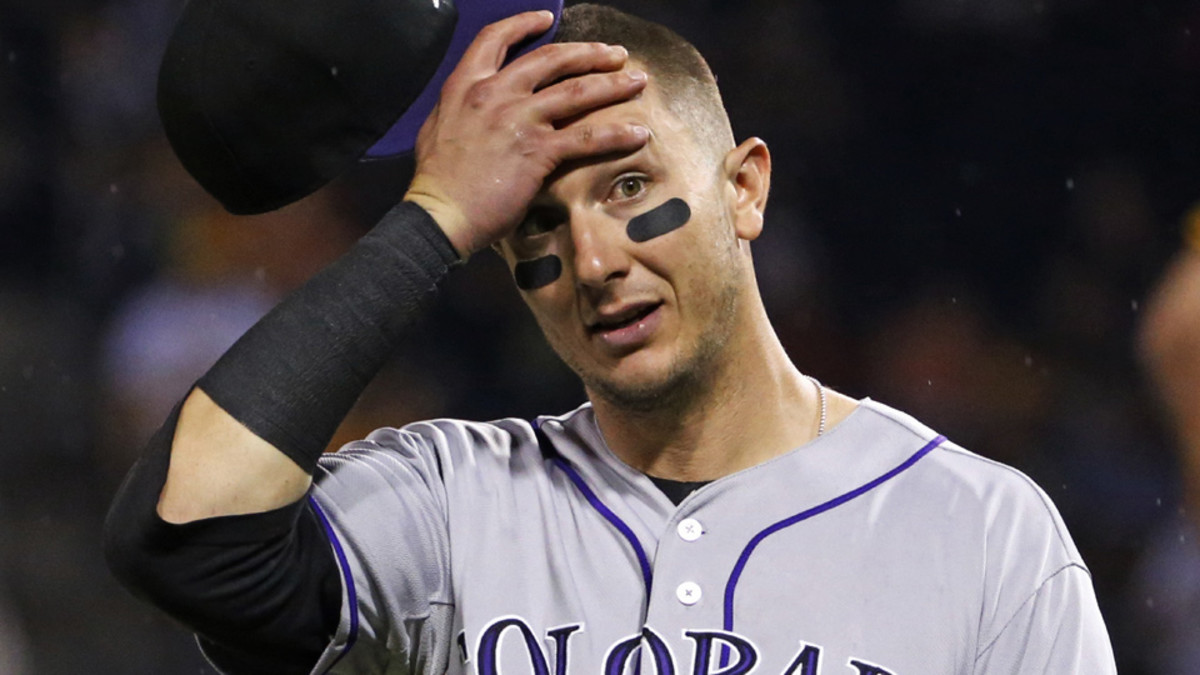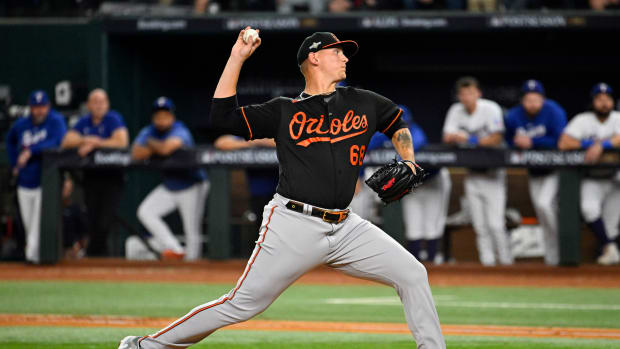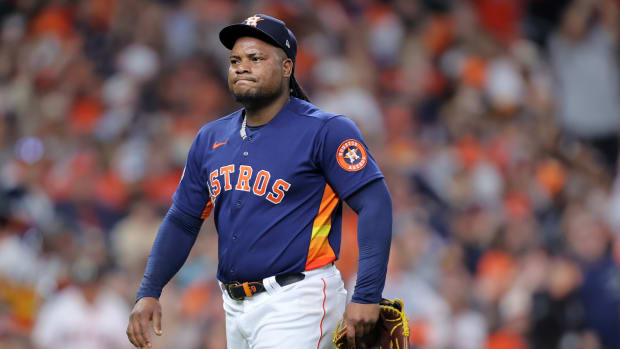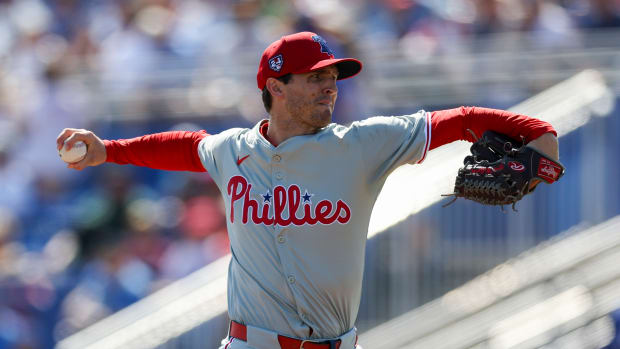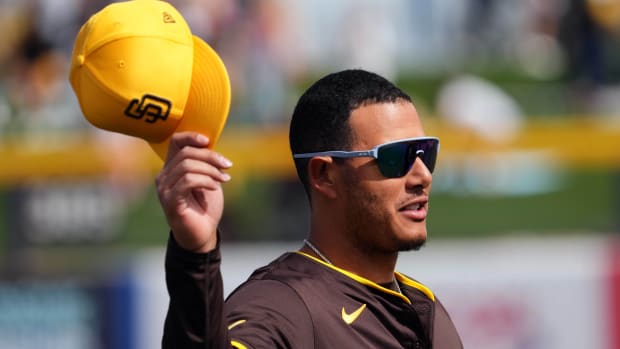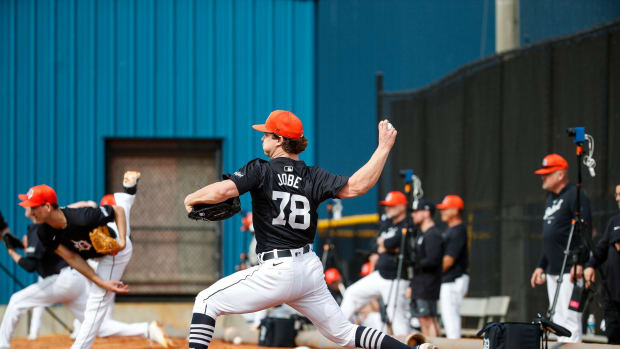Wait 'Til Next Year: Broken bones, bad pitching sink Rockies yet again
While so much of our day-to-day attention in this space is devoted to the teams still battling for playoff spots, we feel as though it's only fitting to acknowledge the teams that have been mathematically eliminated from contention, giving them a brief sendoff that should suffice until Hot Stove season. Thus, the Wait 'Til Next Year series.
Previous entries: Rangers | Red Sox
Current Record: 59-87 (.404, fifth in the NL West)
Mathematically eliminated: Sept. 10
Troy Tulowitzki's injury-prone career could cost him MVP, potential trade
What went right in 2014: For the second straight year, the Rockies burst out of the gate with a hot April, going 22-14 (.611) through May 7 and finishing that day with a share of first place in the NL West. Unfortunately, they have gone 37-73 (.336) since. This is a growing trend for Colorado, as the Rockies haven't had a losing April since 2010, which also happened to be their last winning season. Leading the charge early on was Troy Tulowitzki, who was far and away the best player in the National League until he tore the labrum in his left hip running out a ground ball on July 19, hitting the disabled list with a .340/.432/.603 line and 21 home runs in 91 games. Another April hero was Charlie Blackmon, who went 6-for-6 with four extra-base hits in the fifth game of the season and hit .374/.418/.616 on the month (but just .264/.309/.389 since).
Elsewhere in the lineup, the Rockies enjoyed the rejuvenation of first baseman Justin Morneau (.317/.361/.488 with a fairly even home/road split), centerfielder Drew Stubbs (.287/.330/.447, all career highs, albeit with a drastic home/road split), and backup catcher Michael McKenry (.313/.399/.503, also all career highs, albeit in just 169 plate appearances).
Most importantly, the Rockies have enjoyed breakthrough seasons from 23-year-old starters Jordan Lyles and Tyler Matzek, both of whom looked like busted prospects prior to the season, and 25-year-old outfielder Corey Dickerson. They also saw meaningful improvement at the plate from 23-year-old third baseman and former top prospect Nolan Arenado.
After flurry of failed moves, Towers fired as Diamondbacks' GM
Matzek, a hard-throwing lefty, was the 11th overall pick in the 2009 draft, but fell off prospect lists after a brutal 2011 season in A-ball in which he walked and hit more batters combined than he threw innings. In 2013, he posted a 1.57 WHIP and 1.25 strikeout-to-walk ratio in Double-A, but he showed improvement in Triple-A early this year. In 17 starts since joining the Rockies' rotation in mid-June, Matzek has posted the lowest walk rate of his professional career (3.4 BB/9) and held his own as a league-average starter, posting a 3.64 ERA in his seven home starts and a 1.75 ERA over his last five starts, all of them quality.
Lyles, the 38th overall pick in 2008, was acquired from the Astros in the Dexter Fowler trade in December and arrived in Colorado with a 5.35 career ERA and a home-run rate worse than league average in 377 major league innings. Yet, in 19 starts this season, he has matched Matzek with a roughly league-average ERA+ and a solid groundball rate. Unlike Matzek, however, Lyles will be arbitration-eligible this winter and a free agent after just three more seasons in Colorado.
Dickerson opened the season as an extra outfielder and pinch-hitter, but in the wake of injuries to Carlos Gonzalez and Michael Cuddyer, emerged as the everyday leftfielder in June and has hit .307/.362/.563 on the season with 22 home runs in 119 games. Most of that production has come at home, but his .322/.380/.601 career minor league line and his youth give Rockies fans reason to believe he can maintain that level.
Gibson, Collins among managers in trouble as season winds down
As for Arenado, in his second major league season, he increased his slugging percentage by more than 100 points, taking advantage of Denver's thin air by hitting more fly balls, and improved his walk and strikeout rates, creating a 24-point improvement in his batting average to this point despite very little change in his luck on balls in play.
What went wrong in 2014: The reason Matzek got a chance to establish himself in the rotation is that almost everyone else got hurt. Jhoulys Chacin, the team's best pitcher in 2013, hurt his shoulder early in spring training and was never right afterward, posting a 5.40 ERA in 11 starts before hitting the disabled list at the end of June, where he has remained ever since. True to form, injury-prone lefty Brett Anderson landed on the DL in mid-April, missing three months after fracturing a finger on a swing in which he hit a ground ball off the end of his bat. Five starts after his return, he had his season ended by a bulging disk in his back.
Just four starts after returning from a hamstring injury in mid-April, Tyler Chatwood's elbow gave out, eventually leading to Tommy John surgery in July. And before turning to Matzek, the Rockies called up prospect Eddie Butler, who had posted a 2.62 ERA in Double-A to that point in the season. Butler was torched in his debut and then went on the DL with rotator cuff inflammation. After returning to action in the minors in mid-July, he posted a 5.92 ERA in nine starts.
The rotation wasn't alone in being devastated by injuries, of course. The Rockies' dream of getting healthy seasons from Tulowitzki and Gonzalez continues to be deferred. Tulo, halfway through what would have been the best season of his career, suffered a season-ending labrum tear in his left hip. Gonzalez one-upped his teammate, not only appearing in fewer games (70 to Tulowitzki's 91, due in part to season-ending surgery on his left knee in mid-August), but also missing 35 games in the first half of the season due to a giant cell tumor in his left index finger. Rockies trainer Keith Duggar described it as a "fatty mass with tentacles," and Gonzalez said it looked like a Cheeto or a shrimp.
For Yankees, benching Derek Jeter would hurt more than help
Cuddyer, last year's batting champion, missed more time than either of those two, getting placed on the DL three times (for two hamstring strains, one in each leg, and a fractured left shoulder) and losing 105 games. Arenado was out 37 games with a fractured finger. Catcher Wilin Rosario went on the DL twice (virus, right wrist inflammation) and had his worst season both at the plate and behind it. He led the majors in passed balls, threw out just 18 percent of opposing base stealers, and ranked toward the bottom of the league in pitch-framing — a sub-replacement-level performance on the whole.
Rex Brothers' ERA increased by four runs relative to last year, with all of his peripherals (strikeouts, walks, home runs) heading in the wrong direction and his fellow lefties hitting .302/.430/.500 against him on the season. As a team, the Rockies have thus far allowed a major-league worst 5.1 runs per game, with the worst overall ERA, road ERA, and bullpen ERA in the majors.
If the Rockies go 4-12 the rest of the way, unlikely but hardly impossible, they'll finish with the worst record in franchise history.
Overall outlook: Arenado, Dickerson, Matzek, and Lyles give the Rockies some young, cost-controlled players to build around, and the team did well to extend Jorge De La Rosa with a reasonable two-year deal to give their rotation a potentially solid foundation. However, without health and considerable upgrades to the pitching staff, the Rockies will be hard-pressed to break out of the second division. That good health has proven frustratingly hard to come by, particularly for Tulowitzki and Gonzalez, not to mention Anderson, whose injury history will likely lead the team to decline his $12 million option for next year. Meanwhile, Butler's struggles and the disappointing Double-A debut of Jon Gray have pushed back the likely arrival dates of the team's top two pitching prospects.
Given the team's bleak outlook, the idea of trading Tulowitzki, who will turn 30 next month and has expressed exasperation with Colorado's string of losing seasons, is starting to make a lot of sense. The trick is finding a team willing to absorb the $120 million he is still owed over the next seven seasons while also sending the Rockies a worthwhile collection of talent in return. Short of that, the Rockies look like a team hitting bottom without a plan for how to climb back up.






























